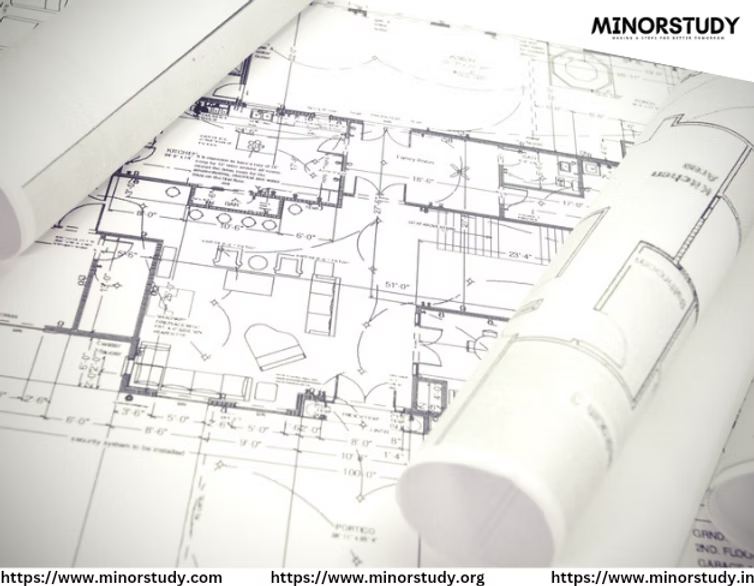Community Design (BCD)
Faculty: Architecture and Planning Degree Type: Bachelor, Entry-to-practice Options: Honours, Internship, Major, Minor
The Community Design (BCD) program focuses on creating and managing spaces that enhance the quality of life in communities. It combines the principles of urban planning, architecture, and design with a strong emphasis on social, cultural, environmental, and economic sustainability. Students learn to design spaces that foster inclusivity, engagement, and community well-being, making this a highly impactful degree for those interested in shaping cities, neighborhoods, and public spaces.
Key Learning Outcomes
Design Thinking: Develop the ability to think creatively and critically about designing spaces that are functional, aesthetically appealing, and socially beneficial.
Community Engagement: Learn how to involve communities in the design process, ensuring that designs reflect the needs and desires of those who will use them.
Sustainability and Environmental Awareness: Understand how to design spaces that are environmentally sustainable, considering factors like energy efficiency, green building practices, and urban ecology.
Cultural and Social Impact: Develop designs that consider the social, cultural, and historical context of the communities they serve.
Project Management: Gain skills in managing design projects, including collaboration with other professionals, budgeting, and timelines.
Core Curriculum
The Community Design (BCD) program integrates multiple disciplines, preparing students for work in urban planning, architecture, and community development. The curriculum emphasizes theory, practical experience, and community collaboration.
Foundational Courses
Introduction to Community Design
An overview of community design principles, introducing key concepts of urban planning, landscape architecture, and public space design.
Design Studio I
The first in a series of hands-on design courses, focusing on the development of basic design skills and concepts in community settings.
Introduction to Urban Planning
A course that covers the basics of urban planning, zoning, transportation, housing, and land-use policies.
Sociology and Community Development
Examines the role of design in the social fabric of communities, exploring issues like social equity, cultural identity, and participatory design.
Environmental Sustainability
A course focused on designing with the environment in mind, addressing topics like sustainable building practices, energy conservation, and eco-friendly materials.
Intermediate Courses
Urban Design and Public Spaces
Study of the principles and practices involved in designing public spaces such as parks, squares, and streetscapes, with a focus on community interaction.
Design Studio II
More advanced studio work, with a focus on urban design and planning solutions for real-world community challenges.
Cultural Contexts in Design
A deeper exploration of how culture, history, and local traditions impact design decisions.
Community Health and Well-being
Understanding the intersection of design, public health, and well-being, and how to create environments that promote mental and physical health.
Technology and Innovation in Design
Introduction to technological tools and software used in modern community design, including computer-aided design (CAD) and geographic information systems (GIS).
Advanced Courses
Design for Social Justice
A course that focuses on designing equitable, inclusive spaces that serve the needs of all community members, particularly marginalized groups.
Sustainable Urban Design
Delves deeper into creating sustainable urban environments that address climate change, waste management, and resource distribution.
Design Studio III
A comprehensive studio course where students work on large-scale community design projects, integrating all aspects of urban planning, architecture, and social engagement.
Community-Based Participatory Research
Focuses on methods for involving communities in the design process, including workshops, surveys, and other participatory methods.
Design Policy and Ethics
Study of the policies and ethical issues that influence community design, such as zoning laws, building codes, and social responsibility.
Capstone Project or Internship
Capstone Project: A final independent design project that allows students to apply their knowledge to a community-based design challenge.
Internship: An opportunity to gain practical experience working in community design firms, urban planning offices, or non-profit organizations focused on community development.
Skills Acquired
Community Engagement and Collaboration: Develop the ability to work effectively with diverse community stakeholders and advocate for their needs in the design process.
Sustainability and Green Design: Learn how to create eco-friendly, sustainable designs that reduce environmental impact and promote social responsibility.
Urban Planning and Public Policy: Gain knowledge of the principles of urban planning, zoning, and public policy and how they affect the design of communities and public spaces.
Project Management: Learn how to manage design projects from concept through execution, including budgeting, scheduling, and client relations.
Design and Visual Communication: Develop skills in visual communication, including sketching, digital modeling, and presentations, to effectively convey design ideas.
Career Opportunities
Graduates of the Community Design (BCD) program are well-equipped to pursue careers in various sectors of urban planning, architecture, and community development. Some career paths include:
Urban Planner
Work in local governments, private firms, or non-profits to design and implement urban plans that address infrastructure, zoning, and public services.
Community Designer
Focus on creating functional and inclusive spaces for communities, including parks, community centers, and public gathering spaces.
Sustainability Consultant
Advise organizations or governments on how to design and build spaces that are environmentally sustainable and energy-efficient.
Architectural Designer
Design buildings and other structures that meet both functional and aesthetic needs while considering social and environmental impacts.
Landscape Architect
Specialize in designing outdoor spaces, such as parks, streetscapes, and recreational areas, with an emphasis on ecological sustainability.
Social Impact Consultant
Work with organizations and communities to create design strategies that promote social equity, inclusion, and well-being.
Policy Analyst in Urban Development
Analyze and propose policies related to urban development, zoning, and community building that promote sustainable and inclusive growth.
Non-profit Program Manager
Work with community-based organizations to plan and implement programs focused on affordable housing, social justice, and urban development.
Why Choose This Program?
Interdisciplinary Approach: The program blends elements of architecture, urban planning, sociology, and environmental studies, preparing students to approach community design from multiple angles.
Community-Centered Design: Students are trained to focus on creating spaces that enhance the lives of community members, with an emphasis on inclusivity, accessibility, and sustainability.
Hands-on Learning: The program emphasizes practical, real-world experience through design studios, internships, and community-based projects.
Global Perspective: While focused on local communities, the program also covers global design trends and how they impact urban spaces and society.
Professional Preparation: The program offers pathways to internships, networking opportunities, and professional certification in community design-related fields.
Conclusion
The Community Design (BCD) program equips students with the knowledge and skills to create meaningful, sustainable spaces that improve the quality of life for communities. By combining theory with hands-on design experience, this program prepares graduates to work in various roles within urban planning, architecture, and community development. Whether through an internship or a capstone project, students will gain practical experience that is directly applicable to their future careers, making them well-prepared to contribute to the development of more sustainable, inclusive, and vibrant communities.









Does your website have a contact page? I’m having trouble locating it but, I’d like to send you an e-mail. I’ve got some suggestions for your blog you might be interested in hearing. Either way, great blog and I look forward to seeing it grow over time.